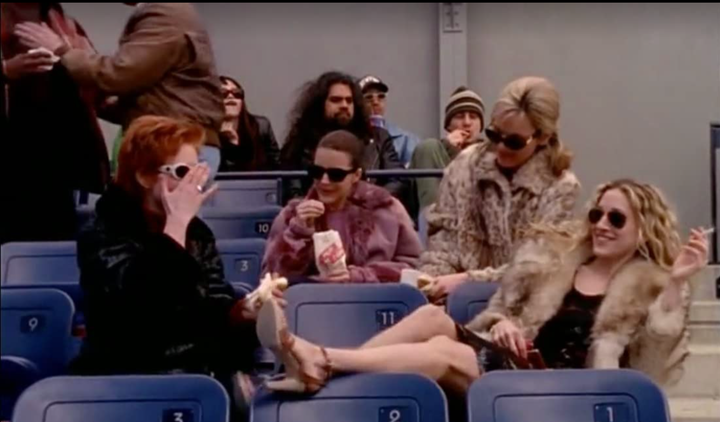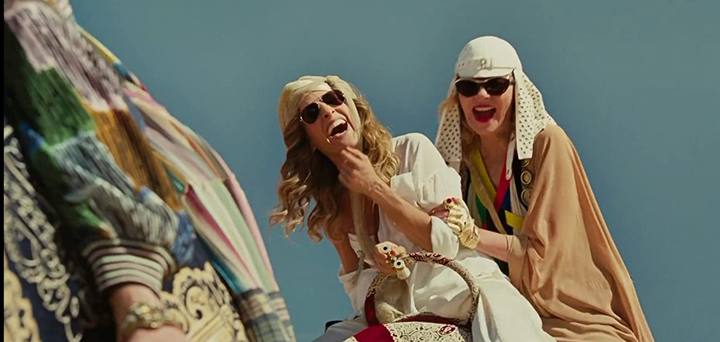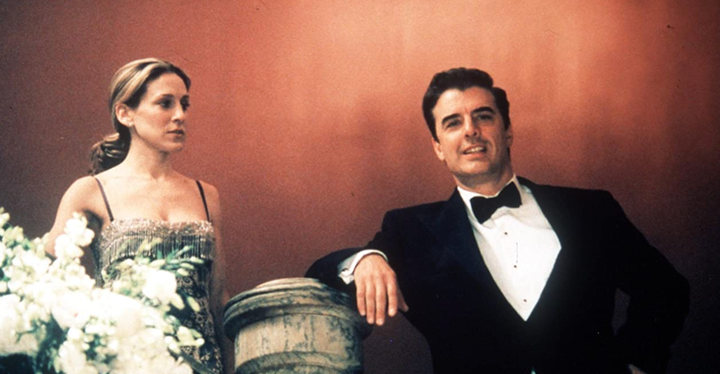[ad_1]
It’s hard to talk about “Sex and the City,” the show, as something separate from the industry it spawned. When people who didn’t watch the show hear the name, they often think of caricatures of women, of Manolo Blahniks, conspicuous consumption, Magnolia Bakery, cosmopolitans. It’s easy to dismiss it as an example of vapid materialism, the most artless and hackneyed kind of media aimed at women.
For the most part, that’s not what it is — or, rather, it hasn’t always been like that. It’s gotten further and further off the rails as it went on, culminating in two deeply embarrassing film sequels. And this week, more than 10 years after the boring, regressive, out-of-touch “Sex and the City 2” showed a burqa-clad Carrie Bradshaw exposing her leg in order to hail a cab in the middle of a Muslim city, there’s talk of a third movie or a “limited series reboot.” Why won’t we just let this show die?

Like a lot of shows made in the late ’90s and early 2000s, much of “Sex and the City” seems dated today. But when it started on HBO in 1998, women on TV didn’t talk about sex, at all. Toxic relationships were rarely explored in depth, especially not from a female point of view. It was a world before “Insecure” or “Fleabag,” and seeing women talk candidly about their sex lives was seen as progressive.
The show also differed from what came before it in showing single women in their 30s as glamorous and aspirational instead of lonely and miserable — though the characters were deeply flawed and often made bad choices.
Much of it hasn’t aged well, like when Samantha dates a black man, or any time there’s a non-cisgender character. (Not to mention the Donald Trump cameo.) Its scope is extremely limited: it’s about what dating is like for thin, conventionally attractive white women who are all obscenely rich — hardly representative of New York as a whole. For many people, that wasn’t seen as a problem when it debuted in 1998. But aren’t we further along now?
High-end fashion was always a part of the show’s appeal, and that, too, narrowed its point of view. Putting your name on a waiting list for a Birkin bag, like Samantha does in season four, isn’t exactly a relatable experience for most people, given that they retail somewhere between USD $40,000 and $500,000. But it wasn’t mindless consumption, or at least not always — there was a storytelling purpose to that kind of luxe living.
In one episode, Carrie is invited to a baby shower, where she’s asked to remove her shoes. They end up being stolen. The friend who’s having the baby offers to pay Carrie back, but balks when she finds out they cost hundreds of dollars. She shouldn’t have to fund Carrie’s selfish, indulgent lifestyle, she says.
But Carrie starts thinking about all the money she’s spent on that friend’s lifestyle. When women get married, their friends are expected to buy engagement gifts, wedding gifts, pay for their bachelorette parties, and for the luxury of being a bridesmaid. They’re asked to give money for baby showers, and buy gifts for their friends’ children. Carrie is single and childfree, and has always pitched in for her friends’ choices, but she’s the one considered selfish.
Not all women without children will opt to buy designer shoes, of course. But that episode made a compelling point about who and what we consider selfish.
The movies, though, have none of that thoughtfulness around their consumerism. Fashion is no longer a fun mode of self-expression; it’s crass capitalism. In the first one, Carrie gets mad when her friends aren’t jealous that her partner buys her a huge apartment, for instance. Another scene uses a Louis Vuitton handbag in place of actual emotional resolution. Jezebel suggested that watching it might make you want to become a communist.
And the less that can be said about the second movie, the better. In one memorable scene, Charlotte and Miranda, who both have kids, opine about how hard it is — and in one throwaway scene add that they don’t know how women without “help” manage. It’s out of touch, to say the least.

You’d hope, as a fan, that the kind of storytelling where everyone is straight and white — except for two token gay men, who end up together — wouldn’t continue onto the show’s two sequels. You’d be disappointed. If anything, it gets worse.
In the first movie, Carrie hires an assistant who’s Black, played by Jennifer Hudson. She’s a prime example of the “magical negro” trope, where a Black character serves no other narrative purpose than helping a white person with their problems. In the second one, Charlotte’s nanny being a lesbian is a punchline, revealed at the very end to show how silly she was for worrying her husband was considering an affair with her.
What’s most puzzling about what’s happening now is that a lot of fans seem to be lobbying for a third movie, as if they hadn’t seen the second one. There was a lot of ire directed at Kim Cattrall, who played Samantha, for saying she wouldn’t come back to the show.
“I remember getting a lot of grief on social media for not wanting to do a film,” she said on a podcast this week. She’s also suggested an actress of colour should play Samantha.

While that would help make the very white series a little more diverse, why bother with a reboot? Very few aren’t actively disappointing — think of the buzz around the new seasons of “Arrested Development” and “Gilmore Girls,” vs. their realities. And this isn’t theoretical: we already have two examples of how bad “Sex and the City” remakes are, each worse than the last.
If we had more shows about women living authentically, maybe we wouldn’t be so attached to this one. Let’s make more shows about female characters who aren’t just straight and white experiencing the pleasure and pain of relationships and intimacy. Let’s let this one die before it embarrasses itself further.
[ad_2]
Source link